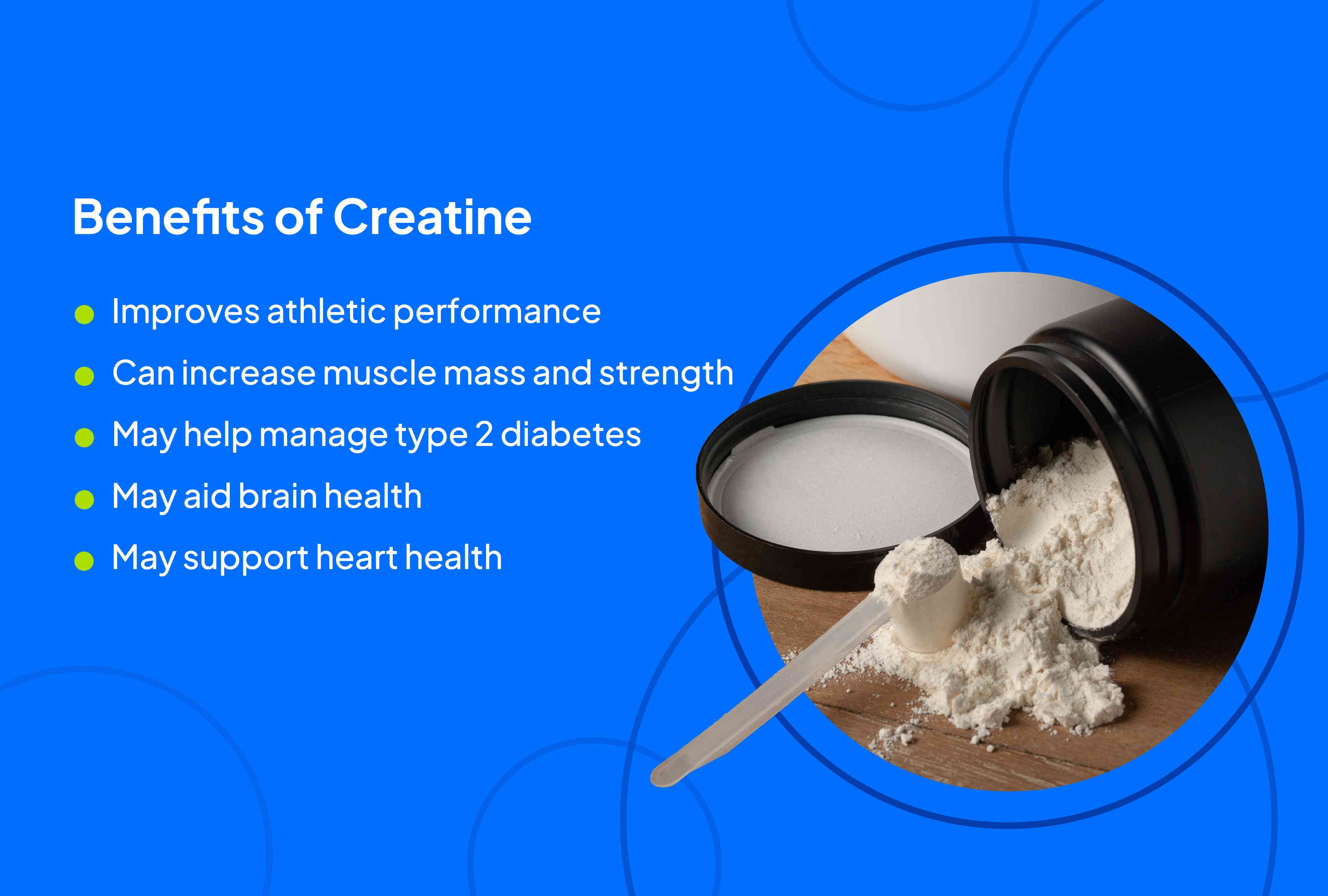The Ultimate Guide To Creatine: Benefits, Risks, And Dosage

Table of Contents
Understanding Creatine Monohydrate
Creatine is a naturally occurring compound primarily found in red meat and fish. It plays a crucial role in energy production within the body, specifically in the synthesis of adenosine triphosphate (ATP). ATP is the primary energy source for muscle contractions, fueling high-intensity activities like weightlifting and sprinting. While your body naturally produces creatine, supplementation can significantly increase its levels, leading to enhanced athletic performance and muscle growth.
Several types of creatine exist, but creatine monohydrate remains the most researched and widely used form. Other forms, such as creatine HCL and creatine ethyl ester, are marketed with claims of improved absorption or reduced side effects, but the scientific evidence supporting these claims is often limited. For simplicity and effectiveness, creatine monohydrate is usually the best choice for beginners.
- Naturally occurring compound in the body: Produced by the liver, kidneys, and pancreas.
- Primarily found in red meat and fish: Dietary intake contributes to overall creatine levels.
- Plays a crucial role in ATP production: Essential for muscle contractions and energy production.
- Different types of creatine: Creatine monohydrate is the most studied and recommended form; others, like HCL and ethyl ester, offer theoretical advantages but lack robust scientific backing.
Benefits of Creatine Supplementation
Numerous studies have demonstrated the effectiveness of creatine supplementation in enhancing muscle growth, strength, and overall athletic performance. These benefits stem from creatine's ability to increase ATP availability, leading to improved power output and faster recovery times.
- Increased muscle mass and strength: Numerous peer-reviewed studies show significant gains in lean muscle mass and strength with creatine supplementation, particularly when combined with resistance training.
- Enhanced athletic performance: Creatine supplementation leads to improvements in high-intensity activities such as weightlifting, sprinting, and jumping. This is due to increased power output and reduced muscle fatigue.
- Improved power output: Studies consistently demonstrate that creatine supplementation increases explosive strength and speed, leading to better performance in various sports.
- Neurological benefits: Some research suggests potential cognitive benefits, such as improved memory and reasoning, although more research is needed to confirm these effects.
- Recovery enhancement: Creatine may contribute to faster muscle recovery after intense workouts, reducing soreness and allowing for more frequent training sessions.
Creatine for Different Activities
Creatine's benefits extend across various athletic disciplines. While particularly beneficial for high-intensity activities, its role in other areas warrants clarification.
- Weightlifting and strength training: Creatine is highly effective for increasing muscle mass, strength, and power output in weight training programs.
- Sprints and other high-intensity interval training (HIIT): Creatine significantly improves performance in short bursts of intense activity.
- Bodybuilding and muscle hypertrophy: Creatine is a cornerstone supplement for building muscle mass and achieving hypertrophy (muscle growth).
- Endurance sports: While creatine's role in endurance sports is limited, some studies suggest potential benefits in specific situations, like improving performance in short, high-intensity bursts within longer endurance events. It's not a primary supplement for long-duration endurance activities.
Potential Risks and Side Effects of Creatine
Creatine is generally considered safe for healthy individuals when used as directed. However, some potential side effects should be considered.
- Water retention (weight gain): Creatine draws water into muscle cells, leading to a temporary increase in body weight. This is primarily water weight, not fat gain.
- Muscle cramps: Muscle cramps are relatively uncommon but can occur, often linked to inadequate hydration.
- Gastrointestinal issues: Some individuals may experience mild gastrointestinal upset, such as diarrhea or stomach discomfort, particularly during the loading phase. This can be mitigated by gradually increasing the dosage.
- Kidney issues: Creatine is generally safe for healthy kidneys, but individuals with pre-existing kidney conditions should consult a doctor before using creatine.
- Liver issues: There is limited evidence of liver damage associated with creatine use; it is generally well-tolerated by the liver.
Creatine Dosage and Cycling Strategies
The optimal creatine dosage and cycling strategy can vary depending on individual factors and goals. However, common approaches include a loading phase followed by a maintenance phase.
- Loading phase: This involves consuming 20 grams of creatine monohydrate daily for 5-7 days to rapidly saturate muscle creatine stores.
- Maintenance phase: After the loading phase, reduce the dosage to 3-5 grams per day to maintain muscle creatine levels.
- Cycling creatine: Some individuals choose to cycle creatine, using it for several weeks or months, then taking a break before restarting. This is largely based on individual preference and is not always necessary.
- Importance of staying hydrated: Adequate hydration is crucial, especially during the loading phase, to minimize the risk of side effects like muscle cramps.
Choosing the Right Creatine Supplement
When choosing a creatine supplement, prioritize quality and purity.
- Look for creatine monohydrate as the primary ingredient: Avoid supplements with proprietary blends or excessive fillers.
- Check for third-party testing and certification (e.g., USP): This ensures the product's purity and accuracy of labeling.
- Avoid supplements with excessive fillers or additives: These can add unnecessary cost and potentially unwanted side effects.
- Consider price per serving for cost-effectiveness: Compare prices per serving to find the most economical option.
Conclusion
Creatine monohydrate, when used correctly, offers significant benefits for muscle growth, strength, and athletic performance. Understanding the proper dosage, potential risks, and various cycling strategies is crucial for maximizing its effects while minimizing any potential side effects. Remember to consult your doctor or a registered dietitian before starting any new supplement regimen, especially if you have pre-existing health conditions. Make informed choices about your creatine supplementation to achieve your fitness goals. Start your creatine journey today and experience the potential benefits for yourself!

Featured Posts
-
 Almeria Eldense Resumen Y Goles De La Liga Hyper Motion
May 16, 2025
Almeria Eldense Resumen Y Goles De La Liga Hyper Motion
May 16, 2025 -
 Analysis The Amber Heard Elon Musk Twins Controversy
May 16, 2025
Analysis The Amber Heard Elon Musk Twins Controversy
May 16, 2025 -
 Hornets Vs Celtics Prediction Expert Picks And Odds For Tonights Nba Game
May 16, 2025
Hornets Vs Celtics Prediction Expert Picks And Odds For Tonights Nba Game
May 16, 2025 -
 Draymond Green On Jimmy Butler Candid Comments After Warriors Win Against Kings
May 16, 2025
Draymond Green On Jimmy Butler Candid Comments After Warriors Win Against Kings
May 16, 2025 -
 Jimmy Butler Game 3 Status Warriors Remain Hopeful
May 16, 2025
Jimmy Butler Game 3 Status Warriors Remain Hopeful
May 16, 2025
